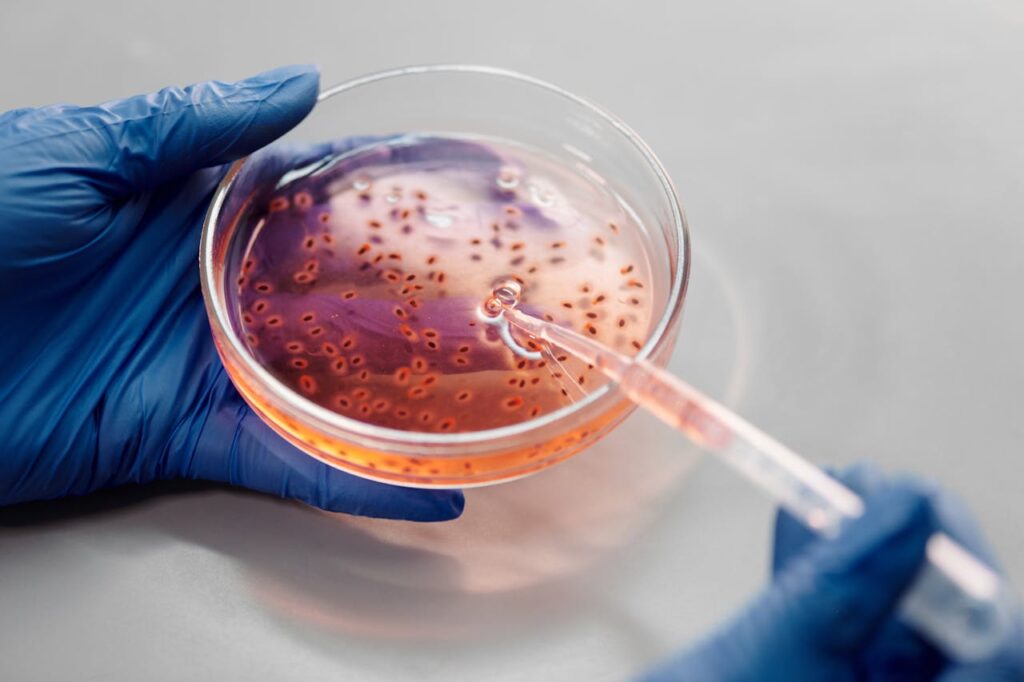12-Year-Old Boy Dies After Contracting Brain-Eating Amoeba at Popular Swimming Spot
Last updated on
It was the kind of summer afternoon families look forward to all year. Clear skies, warm water, and the freedom of a lake day near Columbia, South Carolina. For 12-year-old Jaysen Carr, it was a moment of joy, a dip in Lake Murray that felt like any other. No one could have imagined how that ordinary swim would mark the beginning of something far more devastating.
There are dangers in life we prepare for. Storms, accidents, illnesses with names we recognize. But then there are the rare, almost unthinkable threats that hide in plain sight, waiting not with malice but indifference. And when they strike, they leave behind more than heartbreak. They raise questions about risk, responsibility, and what it means to be truly aware.
A Tragedy in Plain Sight
Twelve-year-old Jaysen Carr was the kind of child who left a quiet mark wherever he went. He was a bright student at Hand Middle School, known for his quick mind and kind heart. He played instruments, skipped a grade, and embraced life with a joy that was impossible to ignore.
On a warm July afternoon, Jaysen and his family visited Lake Murray, a popular swimming spot just outside Columbia, South Carolina. What should have been an ordinary summer outing turned devastating in the days that followed. Jaysen developed symptoms that at first seemed mild—headache, nausea—but quickly became cause for alarm. He was rushed to Prisma Health Children’s Hospital in the Midlands, where doctors fought to save him. On July 18, Jaysen passed away.
In a public statement, the family’s legal team, Bailey Law Firm, described the moment with quiet gravity: “It is with deep sadness that we share the heartbreaking news of 12-year-old Jaysen Carr, who tragically passed away on July 18.” They called him a “bright and beloved student” and expressed deep appreciation for the care provided by Prisma Health’s medical staff. Above all, they shared the family’s hope that no other parent would have to endure a loss like this.
Grief now walks hand in hand with a purpose. Jaysen’s family is choosing to speak, not just to mourn, but to make sure his story is heard—and remembered.
What Is Naegleria fowleri?
Naegleria fowleri is a free-living, single-celled amoeba found in warm freshwater environments such as lakes, rivers, hot springs, and poorly maintained swimming pools. It occurs naturally in soil and water and typically feeds on bacteria in the sediment. Though common in nature, this organism can become deadly under very specific circumstances.
The amoeba becomes dangerous only when water containing Naegleria fowleri enters the body through the nose, usually during swimming, diving, or even using untreated water for nasal rinsing. Once inside the nasal passages, it travels along the olfactory nerve and into the brain, where it begins to destroy brain tissue. The resulting infection is called primary amebic meningoencephalitis (PAM), a rare but almost always fatal disease.

Importantly, Naegleria fowleri does not cause illness if swallowed, and it cannot be transmitted from person to person. The only known route of infection is direct entry through the nose, typically involving forceful water contact, such as during jumps or dives into warm freshwater.
Once the amoeba reaches the brain, symptoms begin within one to twelve days. Early signs may resemble the flu: headache, fever, nausea, and vomiting. As the infection progresses, more severe symptoms appear, including confusion, seizures, hallucinations, and coma. Death often follows within five days of symptom onset, though in some cases it can occur even more rapidly.
Naegleria fowleri related brain infections are extraordinarily rare. Between 1962 and 2022, only 157 cases were confirmed in the United States, with just four known survivors. Each year, the CDC reports zero to eight cases nationwide, despite millions of people swimming in warm freshwater annually. Yet the fatality rate remains alarmingly high, above 97 percent, underscoring why even a rare threat like this warrants public awareness
Recent climate trends may also be shifting the landscape of risk. Warmer summers and longer swimming seasons mean more freshwater bodies reach the temperatures where the amoeba thrives. According to experts quoted by The Washington Post, these environmental shifts could increase the geographic range and seasonal window in which the amoeba is active.
Scientists continue to research why only a very small number of people get sick despite frequent exposure. Factors may include the concentration of the amoeba, the temperature of the water, how vigorously someone engages in water activities, and genetic or immune system differences. So far, however, no consistent pattern has emerged.
Primary amebic meningoencephalitis (PAM) is not only rare—it unfolds with astonishing speed and severity. Early symptoms such as headache, fever, nausea, and vomiting often mimic more common illnesses. By the time neurological signs appear, the infection has typically advanced beyond effective treatment.
Data from the National Library of Medicine underscores just how unforgiving the disease can be: the median survival time after symptom onset is just five days, even when medical care is administered. The fatality rate exceeds 98 percent, highlighting how critical and fleeting the window for intervention is.aSimilarly, the CDC reports that most patients succumb within 1 to 18 days, with death usually occurring around five days after symptoms begin. These data make clear that while PAM is uncommon, the threat it poses is both swift and dire.
This is not a disease that allows for a wait-and-see approach. Its rarity may reduce its visibility in public health discussions, but for those affected, the consequences are swift and irreversible.
A Family Speaks Out: Love, Loss, and Advocacy
Clarence and Ebony Carr are navigating a grief no parent imagines. Their son, Jaysen, was vibrant, athletic, academically gifted, and full of warmth. Now, in the wake of his sudden death from Naegleria fowleri, the Carrs are determined to speak out not just for closure, but for change.
At a news conference following their son’s death, Ebony said, “We’re still in shock about how all this happened.” She added, “had he known the risk, had we known the risk of him swimming in that lake, nobody would have ever chosen to get in.” She also reiterated the need for awareness, saying , “There needs to definitely be some awareness about it, and we don’t want his death to be in vain, because had we known, he wouldn’t have been in it.”
Clarence echoed her heartbreak, describing how quickly their son went from playful to critically ill. “A child should not have to lose their life for doing something they assume was safe.” He added, “They should not have to double-check to see if they are going to live or die from being a boy.”
The Carrs detailed how Jaysen first complained of a headache a few days after their Fourth of July weekend at Lake Murray. When over-the-counter medicine didn’t help, and symptoms progressed to vomiting, they took him to the hospital. He described his pain to doctors with clarity—”on the right side and front of his head and in his left eye.” Within hours, things escalated. “In hindsight, 2020, this was no headache. He was being attacked,” Clarence said.
Despite their devastation, the Carrs are choosing to turn anguish into advocacy. By sharing their story publicly, they hope to raise awareness about the rare but deadly risk that changed their family forever. For them, it is about more than warning others, it is about making sure Jaysen’s life, and his death, have lasting meaning.
Tips for Reducing Risk from Naegleria fowleri
While infections remain rare, simple precautions can greatly reduce the risk of exposure, especially during warm weather months when freshwater activities are most common. Below are practical, science-backed ways to protect yourself and your family without avoiding the water entirely.
- Keep water from entering your nose when swimming in warm freshwater. This is the most direct route for infection, so avoid diving, jumping in, or putting your head underwater in lakes and rivers during hot months.
- Use nose clips or keep your head above water if swimming in untreated freshwater. This simple barrier can help block the amoeba from reaching your nasal passages.
- Avoid swimming in warm freshwater during heatwaves or when water levels are low. Hot temperatures and shallow, still water create ideal conditions for the amoeba to grow.
- Refrain from stirring up the bottom sediment in freshwater bodies. The amoeba often lives in the soil at the bottom of lakes and rivers, where it is most concentrated.
- If you rinse your nose for allergies or congestion, always use sterile, distilled, or properly boiled water. Tap water is not safe for nasal rinsing unless it has been boiled and cooled or passed through a proper filter.
- Use only well-maintained public pools or splash pads, and avoid those that look cloudy or poorly cleaned. Proper chlorination kills Naegleria fowleri, but water that looks unclean may not be properly treated.
- Understand that drinking water is not a risk if it does not go up the nose. Swallowing water that may contain the amoeba does not lead to infection.
- Watch for early symptoms after freshwater exposure and seek immediate care. If symptoms like severe headache, fever, nausea, or vomiting appear within a few days of swimming, seek urgent medical attention.
The Power of Awareness
Jaysen Carr’s death is a devastating reminder that even rare dangers can have life-altering consequences. He was doing what millions of children do every summer, enjoying the water, laughing with family, living fully. The heartbreak of his loss is not only in the silence he leaves behind, but in how swiftly something so unimaginable became reality.

Awareness will not undo what has happened. But it can honor Jaysen’s memory by helping others stay vigilant, informed, and safe. In moments like this, public health is not just about science. It is about storytelling, empathy, and the quiet courage of families who choose to speak out. By listening, we turn grief into guidance. And sometimes, that can be the first step toward saving a life.
Featured Image from Bailey Law Firm, LLC on Facebook
Some of the links I post on this site are affiliate links. If you go through them to make a purchase, I will earn a small commission (at no additional cost to you). However, note that I’m recommending these products because of their quality and that I have good experience using them, not because of the commission to be made.

































 JOIN OVER
JOIN OVER
Comments